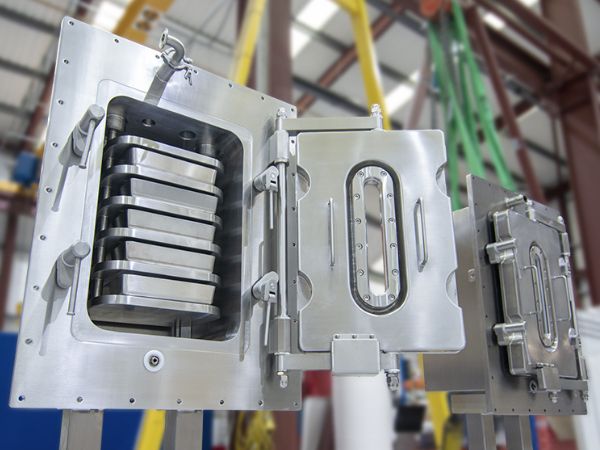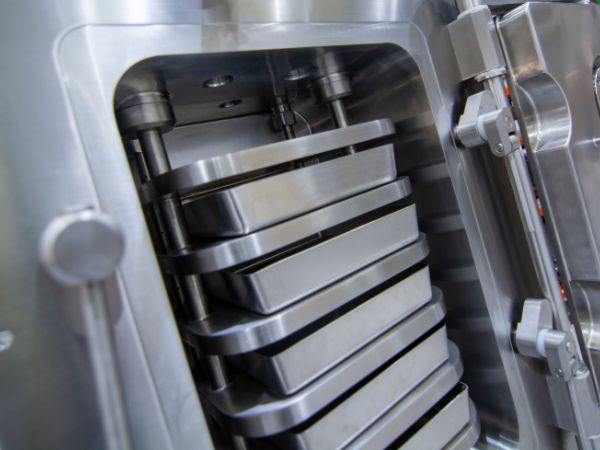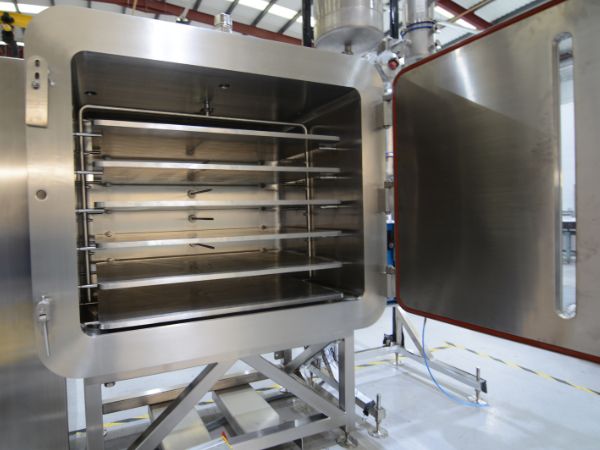
Vacuum drying methods are a mainstay in chemical process industries (CPI), allowing sensitive materials to be dried without inhibiting critical properties. Intermediates and pre-clinical active pharmaceutical ingredients (APIs) tend to be heat-sensitive which makes them unsuitable for high-temperature convection processes.
Highly valuable compounds must be gently dried, otherwise, they may degrade. Any loss of quality across drug pipelines can naturally lead to wasted resources and higher costs. Hence the ubiquity of vacuum drying ovens in pharmaceutical labs, pilot plants, and commercial-scale labs.
Here we outline the basic working principles of vacuum drying processes, with a focus on how vacuum tray dryers work.
The Basics of Vacuum Drying
Drying is a straightforward process. The temperature within a drying chamber is raised to the boiling point of a solvent, supplying heat to a moist feedstock until any free or bound liquid within vaporises. Free moisture on the surface evaporates relatively quickly, while bound moisture within the product first must escape the solid microstructure. The challenge with this form of heat transfer is the feedstock must be subjected to relatively high temperatures. Inducing vacuum conditions enables the same process to occur, but at lower temperatures, protecting sensitive compounds from heat damage.
So how does a vacuum tray dryer actually work? Unlike with a convection oven, the feedstock is not immersed in a heated environment as vacuum technology passes hot fluid through direct heating shelves. The temperature of the feedstock is raised through conduction. As products are heated in a low-pressure environment, this reduces the solvent’s boiling point to facilitate highly efficient, low-temperature drying that occurs at faster rates.


Important Considerations with Vacuum Tray Dryers
Although various new methods have been developed, vacuum tray dryers remain a staple CPI tool, owing to their outstanding reliability and efficiency. Nevertheless, there is a no one-size-fits-all solution when it comes to vacuum drying, and there are various considerations to bear in mind when selecting a drying system, including:
- Batch size
- Moisture content
- Liquid properties
- Ratio of bound to free liquid
- Temperature uniformity
- Vapour pressure profile under use conditions
- Explosive Atmosphere (ATEX, NFPA)
These considerations should be resolved through rigorous testing, and through discussions with a reputable systems integrator.
Looking for Vacuum Tray Dryers?
At Powder Systems Ltd, we provide vacuum tray drying solutions which have been carefully designed to overcome common pain points in kilo- to large-scale productions. If you are looking for an all-in-one solution for lab, pilot and commercial scale, you may be interested in our CakeStandTM vacuum tray dryer. We not only provide innovative technologies but are uniquely prepared to assist with on-site servicing, installation, and aftercare, ensuring that our vacuum tray dryers are ideal for your application. Contact us today if you would like to learn more.
